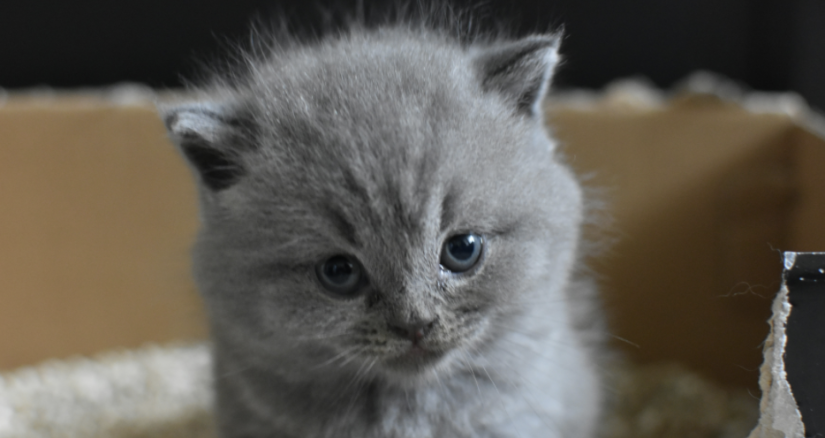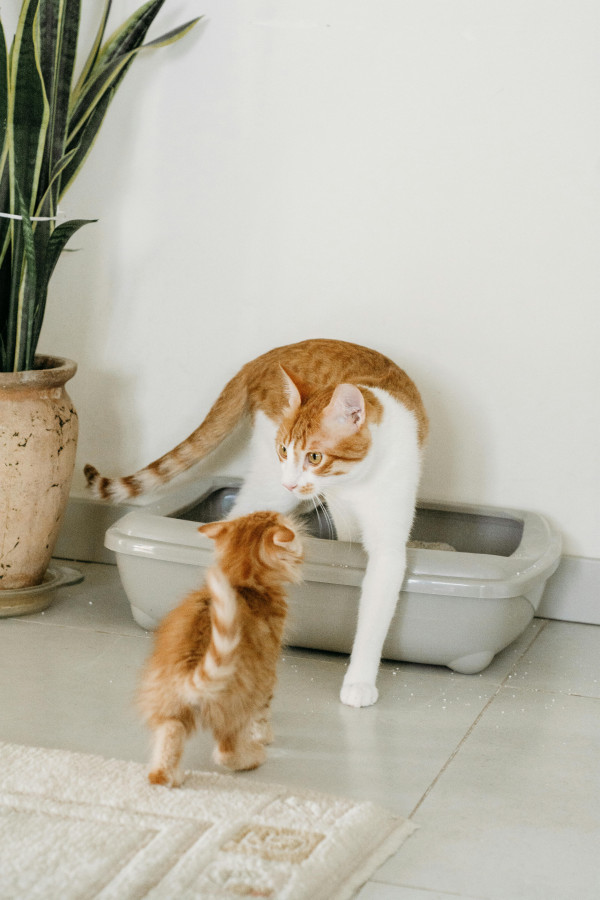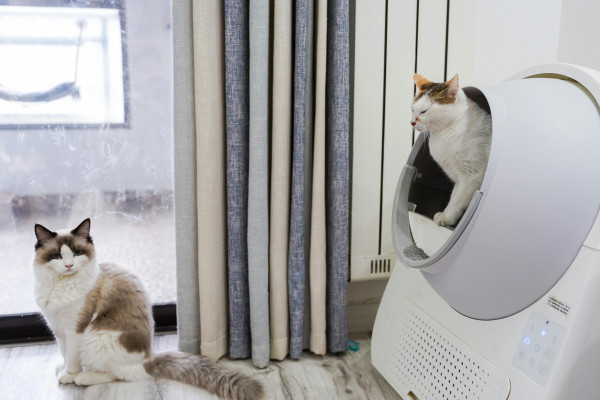
Celebrating Crazy Cat Lady Day: The Scoop on Healthy Litter Habits
Cat ownership is on the rise, and the industry at large is finally starting to give these fabulous felines their due. Cat owners (or staff, as some have put it) can now find everything from dental treats and functional supplements to drinking fountains and automatic feeders. Another area of innovation is in the cat waste sector. Products ranging from sustainable litter to litter additives and automatic self-cleaning litter boxes aim to make scooping and disposing of your cat’s biological waste less of a drudgery.
If you are anything like me, cleaning the litter box can be more than just a small hassle, particularly the longer you put it off. As a cat owner, I watch dog owners take their dogs out in the snow while I sit with a heated blanket and a cat on my lap. I also watch dog owners toss palm-sized waste bags in the bin as I lug pounds of waste and litter up and down my stairs. And if you’re anything like the past me, you’ve put off the chores of scooping and cleaning the box far longer than you should. Hopefully, this article will show you how—and more importantly why—to properly take care of your cat by managing their waste.
Bad Litter Habits: A Toxic Trait
Sometimes called the “crazy cat lady disease” or “fatal feline attraction” for how it inhibits mice’s risk aversion, cat feces is known to carry the parasite Toxoplasma gondii, from which the disease toxoplasmosis is contracted. This parasite can be passed from mammal to mammal, including from cat to human, especially by cats who spend time outdoors.
Felines are the only definitive hosts of the parasite. Toxoplasma gondii most often infects people via undercooked meat, but it is also known to pass through cat feces, since cats are carriers. The infective parasite can be transferred to humans via litter ‘dust’ clouds or touching a litter scoop and then touching your face before washing your hands. While infected people (also cats) rarely show symptoms, those with weakened immune systems are more at risk of the pathogen, along with babies whose mothers were exposed for the first time while pregnant. While not typically a large danger, learning about toxoplasmosis was a motivator in helping me develop a better litter hygiene routine.
As BSM Partners’ own Dr. Katy Miller, DVM, notes, a great way to protect yourself from toxoplasmosis is to scoop the litter box daily. According to the CDC, it takes one to five days for the parasite to become infectious. Daily scooping (or as close as you can get) is also preferred and more comfortable for your fastidious feline, as it gives them clean, dry litter to dig around in. I hate getting my socks wet from the dishwasher, and I’m sure my cats feel similarly about urine-soaked litter.
For proper scooping, hygiene is paramount to protecting yourself. Even without Toxoplasma gondii, the dust that a lot of cat litters (particularly clay-based ones) kick up is still very bad for the lungs when inhaled. I have done everything from holding my breath when scooping to wearing N95 masks (which also helps with odors!) to prevent inhaling excessive litter dust. Litter dust is also harmful to your cat’s lungs, so it is something to be aware of if you have a particularly eager digger. Fortunately, solutions abound, including pelletized litters, sustainable litters made of less dusty materials than clay, and automatic litter boxes that sift and package the cat waste for you. And just think—more frequent cleanings can cut down on nasty odors!

Photo by Nadiye Odabasi
The Scoop on Scooping
Along with daily scooping and replenishing litter with enough fresh stuff to give your cat some digging space, it’s important to remember to dump and clean the litter box periodically. I’ve heard timeframes anywhere from weekly to monthly, so I would do so as often as you realistically can. Ensure you are using gentle cleaning products that won’t harm or deter your cats from future box usage. Hot water and some dish soap or hydrogen peroxide will often do the trick.
After both daily scooping and litter box deep-cleaning, always, always wash your hands. You wash your hands after you use the bathroom, and the same hygiene should apply when handling your cat’s toilet.
For those of you who are immunocompromised or pregnant, there is no need to overly worry yourself. Certainly, we are not recommending you give your cat away! Even if you have no one else in your household to take over litter duties, minimizing risk from toxoplasmosis and other fecal dangers can be accomplished through the tips we’ve discussed:
- Scoop the litter box daily to prevent parasitic oocyst build-up.
- Clean the litter box itself regularly.
- Keep your cat indoors.
- Wash your hands after scooping the litter box.
- Wear a dust mask or disposable gloves for extra protection when scooping.
- Consider alternatives such as non-clay or non-clumping litters, or investing in an automatic litter box.
Other litter etiquette to consider:
- Have enough litter boxes that there is one for each cat, plus one extra.
- Be mindful of where the litter boxes are placed—your cat may not like feeling exposed, and would probably prefer a secluded corner to the middle of the living room.
- Monitor for any changes in litter box behavior or waste output, and see a vet if you notice anything unusual.
- A litter solution must work for both you and your cat—if your cat doesn’t like their current litter or box, or your cat stops using the box altogether, talk to a vet for advice and research alternative litter options.
- Be wary of artificial scents that are solely for humans and may deter the cat from usage.

Photo by Nicholas Fu
Clean Box, Happy Cat
Unfortunately, improper litter box usage is the number one reason cats are surrendered to shelters. While it takes time and habit changes on the human front, a lot of these issues can be improved or alleviated, especially when involving the help of your vet.
Now that you are armed with more knowledge, you can work to improve your own litter box hygiene to make things better for your cat, especially before issues arise. I have certainly improved my habits over the past few years. And if any issues arise or remain that you can’t solve on your own, reach out to your vet for guidance and don’t abandon your cat.
BSM Partners has knowledgeable veterinarians and animal nutritionists on staff who work with companies in the pet space to improve the health of pets. Stay tuned this summer for our Barking Mad podcast episode on sustainable cat litter options!
Follow us on LinkedIn for the latest updates on all things happening here at BSM Partners.
About the Author
Kait Wright is a Senior Analyst at BSM Partners in the Branding, Strategy, and Marketing practice. She has over five years of experience in consumer insights and market research and has worked in both the human and pet food industries. She has volunteered with a local TNR program, domesticating and fostering feral kittens. She earned her B.S. from Brigham Young University and lives in Utah with her two cats.
This content is the property of BSM Partners. Reproduction or retransmission or repurposing of any portion of this content is expressly prohibited without the approval of BSM Partners and is governed by the terms and conditions explained here.